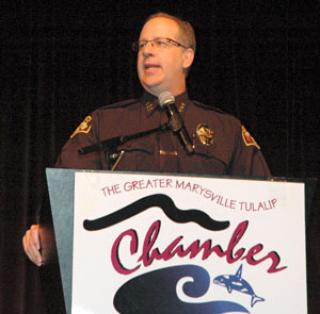Brian Daffron, Indian Country Today Media Network
The lives of at least 50 Native families have been turned upside down, many of them literally, by the tornadoes that devastated Oklahoma in May. One of the many groups reaching out to help is coordinating and sending aid directly to Indian families affected by this disaster.
As another tornado tore through El Reno, Yukon and south Oklahoma City on Friday May 31—also touching down in Moore, still reeling from the devastating May 20 tornado that killed 24—Native people from throughout Indian country were already reaching out to help their fellows.
The El Reno Indian Clinic, which lies within the Cheyenne & Arapaho tribal jurisdiction, was also damaged in the storms. None of the 42 fatalities reported—18 people, including three well known storm chasers doing research, perished in Friday’s five tornadoes—were American Indian. More than 20 American Indian families lost their homes in the May 20 tornado alone, according to the National Museum of the American Indian in Washington, D.C., from tribes including Arapaho, Cherokee, Choctaw, Comanche, Delaware, Jicarilla Apache, Kickapoo, Kiowa, Pawnee, and Shawnee.
While several individual tribes are offering aid, a new group has sprung up to channel aid directly to Indian families themselves. At Trails of H.O.P.E. (Helping Our People Earnestly), people can donate directly to Native American families.
The website is the idea of Oklahoma City area social worker Cortney Yarholar, who is of the Sac & Fox, Creek, Pawnee and Otoe tribes. He was inspired, he said, by words he had been told while growing up.
“ ‘Don’t ask for permission,’ his family elders often told him. ” ‘If you see something that needs to be done, just go do it.’ ”
Yarholar’s wife is from Moore, so he had seen firsthand the aftermath of both the 1999 and 2003 tornadoes that had hit the area. Her family had lost their home both times. He also knew that although FEMA and the American Red Cross handled immediate relief needs, these types of government and non-profit organizations are not always there for the long term. To fill this gap, Yarholar collaborated with the website Last Real Indians to create Trails of H.O.P.E., which is collecting donations to go directly to the Oklahoma Indian Missionary Conference disaster response committee. The Oklahoma Indian Missionary is the governing body of the American Indian Methodist churches within Oklahoma and exists to assist American Indian disaster victims.
“They’re really in it for the long haul, the long term, in helping families rebuild their lives—not only their physical homes but also their lives,” Yarholar said.
As of Monday June 3 the site had raised $5,000, said David Wilson, Choctaw tribal member and the conference superintendent of the missionary. The funds are being used to obtain temporary housing and car rental assistance for storm victims. The missionary has also helped funnel grief-counseling referrals through the Oklahoma City Indian Clinic and assisted in cleanup.
“Because of our various connections with the tribes, we usually know what tribes are going to offer, what support we might get from different agencies that the general public might not have access to,” said Wilson.
The missionary has received pledges for more support from throughout the country, Wilson said, adding that the group will continue working with both the individuals and tribes affected for as long as is necessary.
“Families have gone in to recover as much as they can,” said Wilson. “What we’ve worked on for the last three or four days is helping folks with temporary assistance, with housing. We’ll continue to work with that. We’ll begin looking at the rebuilding stage.”
Trails of H.O.P.E.’s efforts will not stop with this spate of tornadoes, Wilson said, even when the Oklahoma Missionary moves on as it travels throughout the country to help with other disasters.
“Thinking realistically, there will be another disaster somewhere in Indian Country,” Yarholar said. “That way, it will give [the missionary] an opportunity to respond in a timely manner.”
Donations to Trails of H.O.P.E. can be made online through the group’s website, or by sending checks directly to the Oklahoma Indian Missionary Conference, 3020 S. Harvey, OKC, OK 73109. ATTN: Disaster Relief.
More on the Oklahoma tornadoes and relief efforts:
Tornadoes Pummel Moore and Oklahoma City Anew; At Least Five Killed
Oklahoma Awakes to Grim New Reality as Recovery Efforts Begin
President Obama to Oklahoma: Every Resource Is at Your Disposal
More Than 50 Dead as Tornado Decimates Moore, Oklahoma, Hometown of Rep. Tom Cole, and Levels School
Read more at https://indiancountrytodaymedianetwork.com/2013/06/04/oklahoma-tornadoes-new-website-collects-aid-native-victims-149715


















